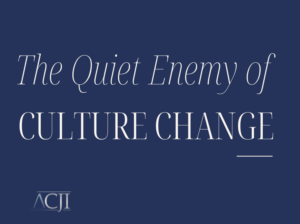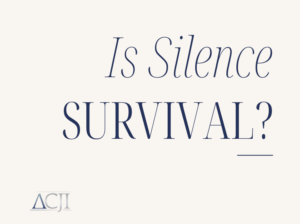What looks like agreement in a meeting may actually be the opposite. Behind the nodding heads, there’s often something more dangerous at play: pseudo-silence.
This is the second part of a three-part blog post series. Read part one here.
Part 2: Pseudo-Silence is the Quiet Enemy of Culture Change and Psychological Safety
If psychological safety is about speaking up, pseudo-silence is its quiet enemy.
Pseudo-silence happens when people stay quiet not because they have nothing to say, but because they don’t feel safe saying it. On the surface, it looks like agreement. Underneath, it’s resistance.

Why Pseudo-Silence Is So Dangerous
- Leaders mistake silence for buy-in. Change efforts move forward with fake consensus.
- Critical input gets lost. Risks, creative ideas, and early warning signs never surface.
- Trust erodes. If people suspect others are holding back, real dialogue breaks down.
- The status quo wins. Toxic dynamics, inequities, or ineffective practices persist unchallenged.
Pseudo-silence is a hidden brake on the culture change engine. Feedback can help you and your organization be better. (Read more about feedback in this article on ACJI.org.)

How to Spot Pseudo-Silence
- Meetings where everyone nods, but nothing changes afterward.
- Staff who disengage or quietly avoid taking risks.
- Absence of open disagreement —not because everyone agrees, but because people don’t trust it is safe to speak up.
In criminal justice or human services, silence is often survival. People worry: If I speak up, will I be seen as disloyal? Negative? At risk for retaliation?
Why it Matters for Culture Change
Culture change requires authentic engagement. If people hold back, leaders only get half the truth, and half-truths can derail reform. For example, how do people REALLY feel about that new program or policy that is coming down? Does the water cooler talk really reflect what is being said in the meeting? Maybe only half of that truth is being shared to the people that matter from the people that matter?
Breaking the Silence
Leaders can actively dismantle pseudo-silence by:
- Naming it. Call it out so people recognize it in action.
- Inviting dissent. Ask, “Who sees this differently?” — and mean it.
- Rewarding courage. Celebrate when someone shares a hard truth.
- Modeling vulnerability. Leaders should go first in admitting mistakes or uncertainty.
- Following through. Show that speaking up leads to change, not punishment.
Bottom Line on Pseudo-Silence
Pseudo-silence thrives in fear. Breaking it requires intentional structure, visible modeling, and real follow-through. The more leaders normalize dissent and reward truth-telling, the more organizations move from pretending to progressing.
Silence may feel safe, but it’s the enemy of progress. In Part 3 of this series, we’ll look at the flip side: “How to Recognize Psychological Safety in Action.”
Want to Go Even Deeper?
ACJI is launching its Culture Academy in November 2025. It’s a 10-week program that takes leaders and teams from culture talk to culture action. Learn more on our website here.





